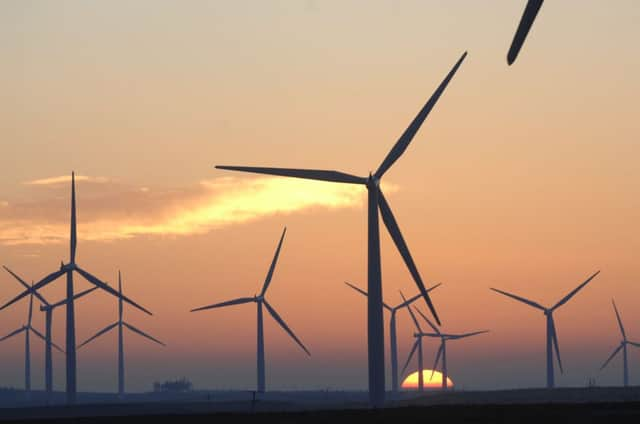Assessing the cost of low carbon initiatives


Reading or listening to the national media or political debates on “green” or “low carbon” issues, the dominant narrative is that “green” is synonymous with “renewable energy”. In turn, renewable energy is typically equated with renewable electricity, which is largely synonymous with onshore wind – and wind power is, to many eyes, synonymous with “inefficient” or “high cost” or “intrusive”.
So it is difficult not to conclude that delivering green or low carbon intentions must come at a high social or economic cost. Indeed, if intermittent onshore wind power were the only outcome of this low carbon agenda, it would come with a high economic and social cost.
Advertisement
Hide AdAdvertisement
Hide AdYet the low carbon activities going on in business, in communities and in public policy in Scotland and around the world bear little relation to this dominant narrative. Instead, much of the focus is on how we deliver the energy services we require – heating, cooling, lighting, mobility – as efficiently and effectively as possible. Analyses of our current energy systems demonstrate that they have developed in largely ad hoc ways, with political decisions about governance and market arrangements overlying infrastructure planned and built for the last century. Inefficiencies are built in to the system, even though more efficient approaches exist and are commercially viable now – and are used in other countries – for delivering the energy services we need.
For example, we can visualise the flow of energy in the UK from production to use (using what are known as Sankey diagrams). In the UK in 2012 we produced or imported 296 million tonnes of oil equivalent (mtoe) energy; and we exported 70mtoe energy, with a further 7 mtoe used for non-energy purposes. The useful energy that we actually used in the UK equated to 156 mtoe. In other words, 30 per cent of the energy we produced or imported is lost through energy conversions or distribution losses.
And after we receive the “useful energy” in our house, our business or our vehicles, a large percentage of this energy is lost through the poor quality fabric of buildings or unnecessary heating/cooling, or inefficient lighting, or inefficient transport systems that contribute to congestion or unnecessary journeys and more wasted time, money and energy.
For example, effective metering and use of information about heat required in different rooms can reduce heating bills by 10-20 per cent. And modern LED lights can provide the same quality of light as most normal bulbs but at a small fraction of the energy consumption. Their drawback is that the upfront cost is higher than standard bulbs, though overall lifetime costs are much lower.
This challenge of having higher upfront costs is common to many emerging “low carbon” energy services for communities. We can show that the overall cost to individuals or households is lower over one, two or five years, but at the point of purchase, people often prefer the least cost option even if they will be better off with other options.
This challenge is magnified because of our inability to forecast energy costs with any accuracy. In 2000, the UK government published its Energy Paper 68. This was the considered view of government and industry experts about future energy prices in the UK. To 2020, they forecast oil prices to be between $10-20/barrel; gas prices to be between 11-23pence/therm; coal prices to be between $26-42/tonne and petrol / diesel prices to be less than 75p per litre. We now have oil prices over 5 times higher than the expected highest likely costs; gas prices 3 times higher; coal 50 per cent higher; and petrol/diesel almost twice as expensive.
With lifetimes of technologies typically in excess of 15-20 years, and our inability to forecast energy costs accurately more than a year or two in advance, we need to rethink how we communicate energy issues to the wider public. Instead of focusing on what is the current cheapest option (currently gas), we need to consider what energy system will deliver the energy services we require but with the resilience to cope with unknown future energy costs.
We need to focus on the productive use of energy in households and businesses rather than the unit price of electricity or gas. This will allow us to reclaim “low carbon” to its proper meaning, which is to deliver the energy services we need as individuals, businesses or communities, far more productively, and with less dependence on fossil fuels. Low carbon does not mean high cost.
• Andy Kerr is executive director, Edinburgh Centre for Carbon Innovation (ECCI) www.edinburghcentre.org
SEE ALSO